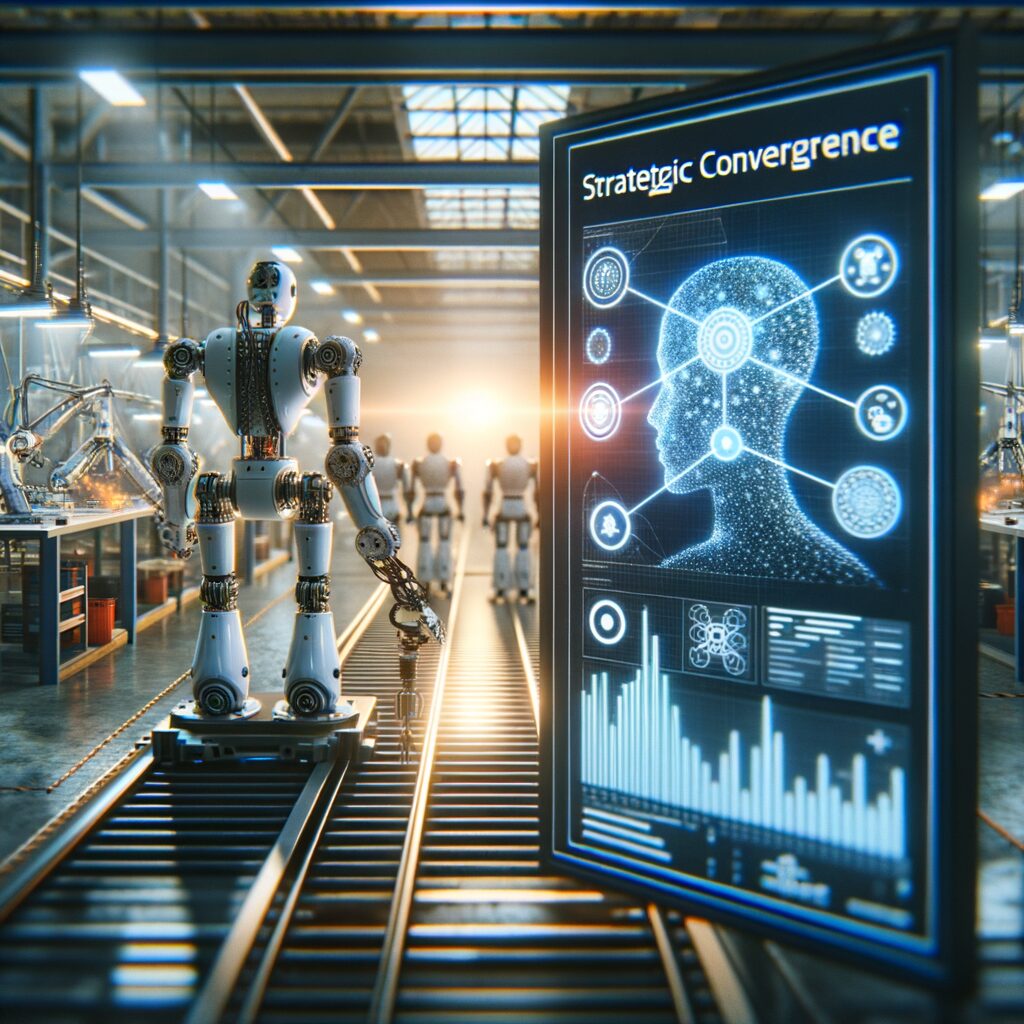The Intersection Advantage: Where AI, Industry, and Mission Meet
Innovation today transcends isolated advances, happening at the crossroads of domains. As technology intersects with industries, it creates unprecedented opportunities for growth and transformation. In this article, readers will explore how AI seamlessly integrates with various fields to drive innovation, discover real-world examples of such transformative combinations, and understand the significance of purposeful convergence in strategic planning. Are you ready to explore how intersections can redefine your organization’s path?
Unlocking New Possibilities with AI at the Core
At the heart of modern innovation lies artificial intelligence, a field rapidly pivoting industries toward new horizons. But what happens when AI intersects with spatial computing or robotics? Consider the frontline healthcare innovation where AI-driven imaging systems streamline diagnostics, allowing doctors to diagnose conditions with remarkable accuracy. Here, AI doesn’t just exist as a standalone entity; it effectively amplifies the capabilities of spatial computing.
The same principle applies to the manufacturing sector, where AI is revolutionizing robotics. Picture automated systems that do more than repeat tasks—they learn and adapt based on AI insights. These intelligent robots enhance production efficiency like never before. But how do organizations effectively harness this intersectional power without losing focus on their core mission? This dual pursuit of innovation and mission is what sets successful enterprises apart.
When AI and industry-specific technologies converge, the impact is manifest in enhanced productivity, reduced costs, and groundbreaking products. However, the success of these implementations relies heavily on strategic foresight and willingness to adapt. By nurturing a culture of innovation that encourages the exploration of interdisciplinary solutions, organizations can stay ahead in this fast-evolving technological landscape.
- AI-Integrated Imaging Systems in Healthcare
- Learning and Adaptive Robots in Manufacturing
- Cost-Efficiency through Interdisciplinary Approaches
ERP Meets Multimodal Analytics: A Game Changer
Enterprise Resource Planning (ERP) systems have long been used to manage a company’s core processes. However, the intersection of ERP with multimodal analytics represents a monumental shift in how businesses approach decision-making. But how exactly do these two worlds work in tandem to drive business value?
Imagine a retail company integrating ERP with rich multimodal data from social media, sales platforms, and customer feedback. The fusion allows for real-time insights into consumer behavior, enabling dynamic adjustment of marketing strategies and inventory management. This blend of ERP and analytics fosters a holistic overview, letting businesses become more agile and customer-focused.
This approach translates into actionable insights and optimized operational efficiencies. For instance, predictive analytics combined with ERP can anticipate market trends, thus empowering companies to make informed decisions ahead of the curve. The harmonious collaboration between these technologies doesn’t just optimize existing operations—it innovates them.
Furthermore, by leveraging multimodal analysis, businesses unlock new avenues for personalization and customer engagement. The strategic synthesis of these tools is essential in future-proofing organizational growth, particularly amid ever-changing consumer demands.
- Real-Time Consumer Insights through ERP and Analytics
- Predictive Market Trends for Informed Decision-Making
- Enhanced Personalization and Customer Engagement
Purposeful Convergence: A Strategic Imperative
In a world where technology evolves at breakneck speed, the key to staying competitive lies in purposeful convergence. Leaders who adopt a systems-thinking approach can ascertain the potential of intersecting technologies long before they become mainstream. Why is it pivotal to focus on strategic integration rather than isolated technological advances?
Consider the automotive industry, where AI, IoT, and advanced analytics converge to create autonomous vehicles. This revolutionary shift wouldn’t have been achievable without envisioning the ecosystem as a whole. Similarly, purpose-driven convergence ensures that technological innovations align with organizational missions, creating sustainable value.
The need for such strategic foresight is ever more critical in dealing with innovation at the crossroads. Companies must encourage interplay among departments, fostering an integrated culture inclusive of diverse technological advancements. This collaborative approach not only solves complex problems but also positions organizations as pioneers in the innovation landscape.
By adopting strategies that prioritize convergence, organizations can circumvent the pitfalls of siloed advancements while promoting responsible and efficient growth. As competition tightens, those who recognize and implement purposeful convergence will undoubtedly emerge as leaders.
- Systems Thinking for Strategic Integration
- Aligning Technological Advances with Mission Goals
- Creating Sustainable Value through Innovation
Stepping into the Future: What Lies Ahead?
As we move closer to a future defined by intersecting technologies, leaders must remain vigilant in their pursuit of innovative ways to integrate AI, industry-specific solutions, and mission-oriented objectives. Are you poised to explore uncharted territories where technology meets business strategy?
Innovation, driven by purposeful convergence, offers unparalleled opportunities for enterprises willing to venture beyond traditional silos. Embracing this approach not only ensures staying ahead but also aligns technological advances with long-term organizational goals. What unexpected tech combinations are you betting on?

